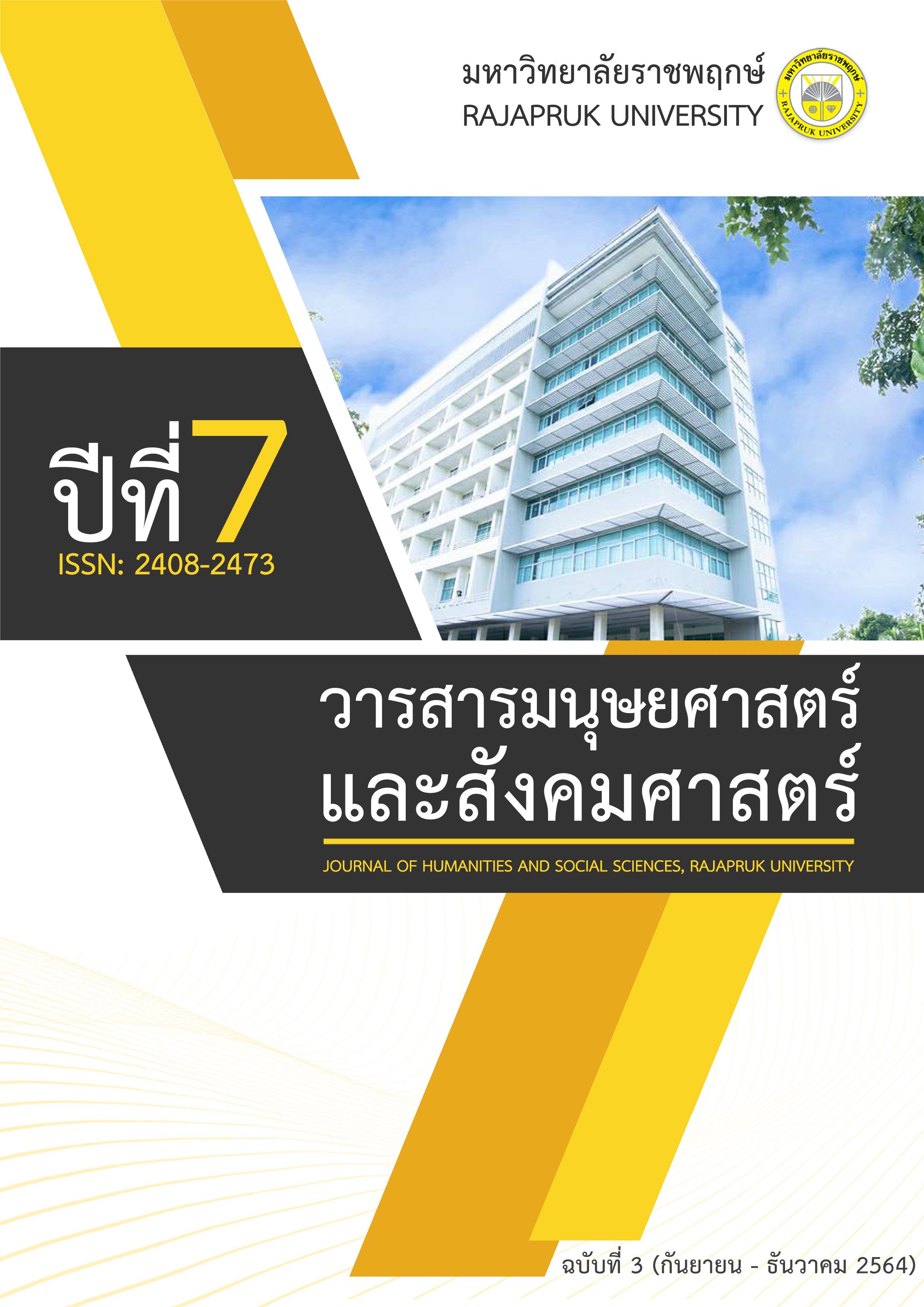Leadership and Organizational Success: A Case Study of Automotive Parts Companies
Main Article Content
Abstract
The objectives of this research were to: 1) Synthesis the components, leadership, and organizational success of automotive parts companies., 2) Study models of leadership and organizational success of automotive parts companies. The instrument used in this research was an in-depth interview. There are 3 groups of key informants, consisting of 9 executives, a group of human resource employees of 4 people, and a group of clients of 5 people, totaling 18 people. The data analysis was carried out by using content analysis techniques.
The results showed that 1. The synthesis of leadership elements and organizational success of the Automotive Parts Companies has five leadership elements: the first component is the Leader has the following characteristics: 1) a broad vision, 2) good management, 3) knowledge of modern technology or digital, 4) teamwork and 5) communication skills Convince. The second component is the follower with the following characteristics: 1) applying the sufficiency economy principles to work, 2) knowledge of modern technology, 3) good communication skills, and 4) teamwork. The Third component is the situation or leadership formulation activities. The fourth component is Influencing and the fifth component is the organizational goals. 2. Model of Leadership and Organizational Success of Automotive Parts Companies. From the model, it should be presented as the leader characteristics as follows: 1) having a broad vision, 2) being good management, 3) having knowledge of modern technology or digital, 4) teamwork and 5) having persuasive communication skills.
Article Details
References
ชุติมา รักษ์บางแหลม. (2559). การวิเคราะห์องค์ประกอบภาวะผู้นำเชิงจริยธรรมและประเด็นปัญหาจริยธรรมในการบริหารสถานศึกษาของผู้บริหารวิทยาลัยพยาบาล สังกัดสถาบันพระบรมราชชนก กระทรวงสาธารณสุข. ศึกษาศาสตรดุษฎีบัณฑิต มหาวิทยาลัยสงขลานครินทร์.
ปิลัญ ปฏิพิมพาคม. (2550). รูปแบบภาวะผู้นำและประสิทธิผลของผู้บริหารสถานศึกษาเอกชนระดับการศึกษาขั้นพื้นฐาน. ปรัชญาดุษฎีบัณฑิต มหาวิทยาลัยศิลปากร.
พันธุ์พรหม รังสิธารานนท์. (2558). การพัฒนาสมรรถนะพนักงานฝ่ายทรัพยากรมนุษย์ในบริษัทกลุ่มอุตสาหกรรมยานยนต์และชิ้นส่วน. ปรัชญาดุษฎีบัณฑิต มหาวิทยาลัยรามคำแหง.
สถาบันยานยนต์. (2561). 20 ปี สถาบันยานยนต์กับทศวรรษการเปลี่ยนแปลงของอุตสาหกรรมยานยนต์. กรุงเทพมหานคร.
สมาคมการจัดการงานบุคคลแห่งประเทศไทย. (2552). การบริหารทรัพยากรมนุษย์กับเศรษฐกิจพอเพียง. กรุงเทพมหานคร.
สุขพัชรา ซิ้มเจริญ. (2556). โครงสร้างองค์ประกอบภาวะผู้นำเชิงสร้างสรรค์ของผู้นิเทศภายในสถานศึกษาระดับมัธยมศึกษา สังกัดสำนักงานคณะกรรมการการศึกษาขั้นพื้นฐาน. ปรัชญาดุษฎีบัณฑิต มหาวิทยาลัยศรีปทุม.
DuBrin, A. J. (2010). Principles of leadership. 6th ed. South-Western, Cengane Learning: International Edition.
Elbert, R. J. & Griffin, R. W. (2015). Business Essentials. 10th ed. Person: Global Edition.
Fred E. Fiedler. (1967). The Contingency Modeling of Leadership. University of Washington.
Griffin, R. W. & Moorhead, G. (2014). Organization behavior: managing people and organization. 11th ed. Mason, OH: South-Western, Cengage Learning.
Kouzes, J. M. & Posner, B. Z. (2012). The leadership challenge: how to get extraordinary things done in Organization. San Francisco, CA: Jossey-Bass.
Northouse, P. G. (2012). Leadership: Theory and practice. 6th ed. Thousand Oaks, CA: SAGE Publication, Inc.


